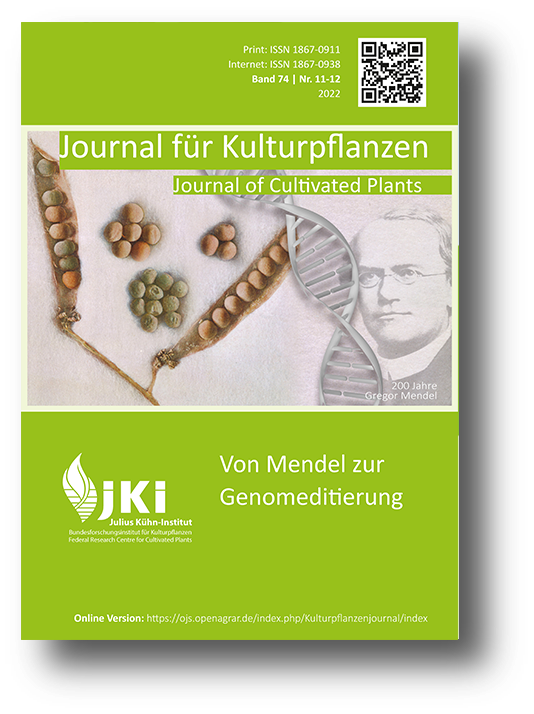Induced mutations for studying Mendelian inheritance
DOI:
https://doi.org/10.5073/JfK.2022.11-12.08Keywords:
mutagenesis, CRISPR-Cas, genome editing, TILLING, TILLING by sequencing, polyploidyAbstract
All genetic variation results from mutations. Orders of magnitude can increase mutation rates by applying irradiation or chemical treatment. Genome editing offers new perspectives for mutation induction because mutation sites can be precisely targeted even within large plant genomes for the first time. Generally, transgenes after genetic engineering also result in new genetic variation. All single-gene mutations after genome editing, transgenesis, or chemical mutagenesis are inherited according to the Mendelian rules. Thus, offspring can be phenotypically classified into discrete classes, whereas polygenic inheritance results in continuous variation. However, genome-wide studies have blurred the boundaries between the two in recent years. Single-gene knockout mutations can be inherited non-Mendelian, mainly if transcription factor genes are targeted. Even classical Mendelian traits are now believed to be controlled by numerous genes. Therefore, Mendelian genetics should be limited to genetic variation, whereas phenotypic variation should be considered polygenic.
Published
Issue
Section
License
Copyright (c) 2022 Christian Jung

This work is licensed under a Creative Commons Attribution 4.0 International License.
The content of the journal is licensed under the Creative Commons Attribution 4.0 License. Any user is free to share and adapt (remix, transform, build upon) the content as long as the original publication is attributed (authors, title, year, journal, issue, pages).
The copyright of the published work remains with the authors. The authors grant the Journal of Cultivated Plants, the Julius Kühn-Institut and the OpenAgrar repository the non-exclusive right to distribute and exploit the work.







